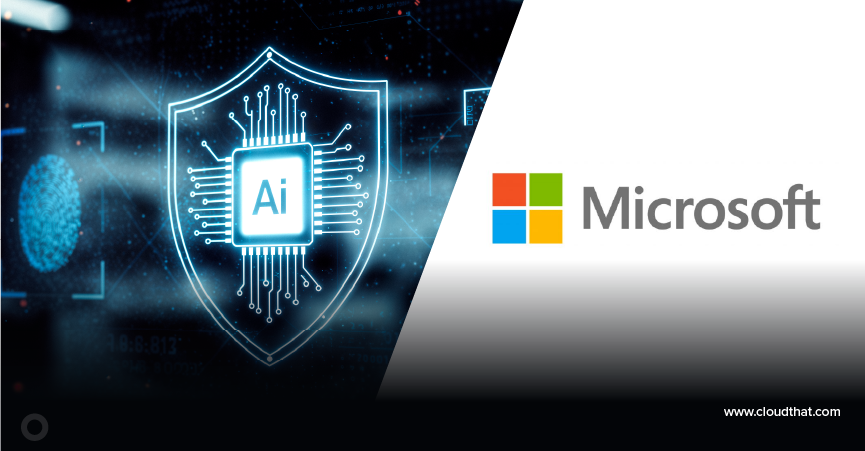|
Voiced by Amazon Polly |
Overview
Artificial Intelligence (AI) has grown rapidly in the past few decades, and today, we see it powering everything from recommendation engines to autonomous vehicles. But behind this technological boom are two distinct schools of thought in AI: Symbolic AI and Neural Networks (sub-symbolic AI). Historically, these two approaches have developed in parallel, each with strengths and weaknesses. Recently, researchers and practitioners have explored how combining them in a hybrid intelligence concept can lead to more explainable, and human-like AI systems.
Pioneers in Cloud Consulting & Migration Services
- Reduced infrastructural costs
- Accelerated application deployment
Symbolic AI
Symbolic AI, also known as Good Old-Fashioned Artificial Intelligence (GOFAI), is grounded on unequivocal representations of knowledge using symbols and sense. Suppose rules like:
if (person is a student) AND (person has ID) THEN (grant library access)
Such systems can reason, plan, and manipulate symbols to mimic human logical thinking. Early AI successes like expert systems, chatbots( like ELIZA), and theorem provers reckoned on emblematic styles.
Strengths of Symbolic AI:
- Interpretability: The decision-making process is transparent.
- Generalization: Works well when domain knowledge is available.
- Consistency: Rule-based systems are predictable and structured.
Weaknesses:
- Brittle: Struggles with incomplete or noisy data.
- Manual Knowledge Engineering: Requires domain experts to encode rules.
- No Learning: Doesn’t adapt or learn from experience.
Neural Networks
Neural networks, the foundation of Deep Learning, mimic the architecture of the human brain. Instead of using rules, they learn patterns from large volumes of data. From recognizing faces to generating text, neural networks power today’s most impressive AI feats.
Strengths of Neural Networks:
- Learning Ability: They adapt by training on data.
- Robust to Noise: Can handle uncertainty and variability.
- Scalable: Perform well with massive datasets.
Weaknesses:
- Black Box: Difficult to interpret decisions.
- Data Hungry: Large, labeled datasets are required.
- No Explicit Reasoning: Poor at logical reasoning or symbolic manipulation.
The Case for Hybrid Intelligence
Symbolic AI and neural networks solve very different problems. Where one falls short, the other shines. Combining them can create systems that are:
- Intelligent and Interpretable
- Flexible and Structured
- Capable of Learning and Reasoning
This combination is called Hybrid Intelligence, which integrates symbolic reasoning with sub-symbolic learning.
Let’s look at some motivations for this integration:
- Enhancing Explainability
Neural networks often make accurate predictions but can’t explain why. In high-stakes fields like healthcare or law, this is problematic. A symbolic layer can provide rule-based explanations on top of neural outputs, improving trust and accountability.
- Improving Data Efficiency
Symbolic systems don’t need vast datasets; they work on logic and structure. By guiding neural networks with symbolic rules, learning can be more data-efficient, especially in low-data environments.
- Enabling Commonsense Reasoning
Neural networks struggle with basic logical deductions. By integrating a symbolic reasoning engine, systems can perform commonsense inference, like understanding “if it’s raining, the ground will be wet.”
Real-World Applications of Hybrid Intelligence
- Natural Language Understanding
Understanding human language is both a pattern-recognition and a reasoning problem. Tools like OpenAI’s ChatGPT, Google’s Bard, and Meta’s LLaMA blend statistical language models with structured prompts or symbolic scaffolding.
In some approaches, neural networks generate language embeddings, which are then passed to symbolic systems for reasoning, for instance, understanding cause and effect in a story.
- Robotics
Robots must perceive their environment (neural networks) and act according to rules (symbolic AI). Hybrid approaches help robots learn from vision and follow logical plans, like navigating a room while avoiding obstacles.
- Healthcare Diagnostics
Combining medical ontologies (symbolic knowledge) with deep learning models trained on medical images can enhance diagnostic accuracy and provide interpretable insights to clinicians.
- Fraud Detection and Finance
Neural networks detect complex fraud patterns in transaction data, while symbolic logic handles regulatory compliance and audit trails. The hybrid system improves transparency and reliability.
Architectures for Hybrid AI Systems
There is no one-size-fits-all hybrid model. Here are some commonly used architectures:
- Neuro-Symbolic Integration
In this architecture, a neural network feeds outputs into a symbolic engine. For example, a vision model identifies objects, and a symbolic module reasons over them (e.g., “cup is on table, table is under lamp”).
Example: IBM’s Neuro-Symbolic Concept Learner (NSCL) answers questions about images using neural perception and symbolic reasoning.
- Symbolic Guidance in Learning
Symbolic knowledge can guide neural networks during training by injecting prior knowledge, shaping the learning trajectory, and reducing the data requirement.
Example: Using a knowledge graph to guide question-answering models or sentiment analysis tools.
- Differentiable Logic Layers
This emerging approach involves embedding logic rules into neural networks differently, allowing end-to-end training while maintaining logical consistency.
Example: DeepProbLog, Logic Tensor Networks.
Challenges in Hybrid Intelligence
As promising as it sounds, building hybrid systems is not without hurdles:
- Integration Complexity
Symbolic and neural models operate on different paradigms; one is discrete and rule-based, and the other is continuous and probabilistic. Seamlessly integrating them requires clever architecture design and tooling.
- Training Difficulties
It’s not always clear how to train such systems end-to-end. While neural networks rely on backpropagation, symbolic logic lacks a gradient, making joint optimization a research challenge.
- Knowledge Representation
Representing real-world knowledge in a form usable by both symbolic and neural components is difficult. Questions like “How do you represent uncertainty in logic?” or “How do you map symbols to embeddings?” are open problems.
The Future of Hybrid AI
The path forward in AI likely lies not in choosing between symbolic or neural approaches but in merging them thoughtfully. Just as the human brain combines low-level pattern recognition with high-level reasoning, artificial intelligence must do the same.
Major AI research labs are already embracing the hybrid paradigm:
- DeepMind’s AlphaCode uses neural models to generate code and symbolic parsers to validate and optimize it.
- OpenAI’s Codex can generate code but relies on symbolic feedback loops to ensure logical consistency.
As we move toward Artificial General Intelligence (AGI), we will need systems that can see and predict, understand, reason, and justify. Hybrid Intelligence is our best bet.
Conclusion
Hybrid Intelligence is a blueprint for the next generation of AI systems: explainable yet powerful, structured yet flexible, trained yet knowledgeable.
Drop a query if you have any questions regarding Hybrid AI and we will get back to you quickly.
Making IT Networks Enterprise-ready – Cloud Management Services
- Accelerated cloud migration
- End-to-end view of the cloud environment
About CloudThat
CloudThat is an award-winning company and the first in India to offer cloud training and consulting services worldwide. As a Microsoft Solutions Partner, AWS Advanced Tier Training Partner, and Google Cloud Platform Partner, CloudThat has empowered over 850,000 professionals through 600+ cloud certifications winning global recognition for its training excellence including 20 MCT Trainers in Microsoft’s Global Top 100 and an impressive 12 awards in the last 8 years. CloudThat specializes in Cloud Migration, Data Platforms, DevOps, IoT, and cutting-edge technologies like Gen AI & AI/ML. It has delivered over 500 consulting projects for 250+ organizations in 30+ countries as it continues to empower professionals and enterprises to thrive in the digital-first world.
FAQs
1. What are some real-life examples where hybrid AI is already being used?
ANS: – Hybrid AI is found in systems like self-driving cars, which use neural networks for image recognition and symbolic rules for traffic laws. Another example is medical diagnostics, where AI combines image-based predictions with medical guidelines to suggest treatments.
2. Is Hybrid Intelligence the same as Artificial General Intelligence (AGI)?
ANS: – No. Hybrid Intelligence is a step toward AGI, but it is not the same. It combines current symbolic and neural methods to improve performance and explainability, while AGI refers to AI that can perform any intellectual task a human can.

WRITTEN BY Modi Shubham Rajeshbhai
Shubham Modi is working as a Research Associate - Data and AI/ML in CloudThat. He is a focused and very enthusiastic person, keen to learn new things in Data Science on the Cloud. He has worked on AWS, Azure, Machine Learning, and many more technologies.


 Login
Login


 June 16, 2025
June 16, 2025 PREV
PREV











Comments